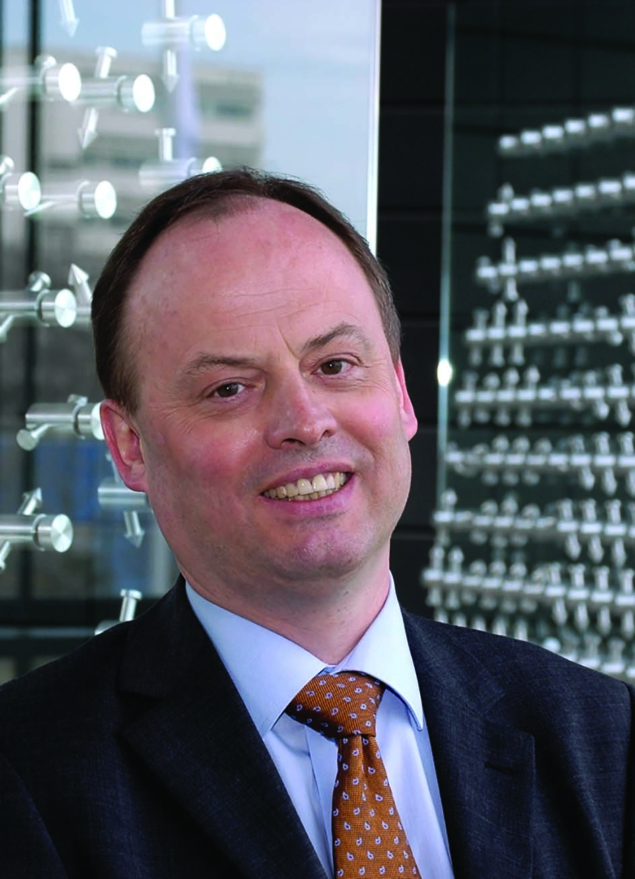
Karlheinz Meier, a visionary experimental particle physicist and co-founder of the Human Brain Project, unexpectedly passed away on 24 October, much too early, at the age of 63.
Karlheinz’s career began at the University of Hamburg in Germany, where he studied physics. He completed his PhD there in 1984, with Gus Weber and Wulfrin Bartel as his supervisors, working for the JADE experiment at the PETRA electron–positron collider at DESY. During the following six years, he worked at CERN for the UA2 project, for two years as a CERN fellow and then as staff scientist. Returning to DESY in 1990, he joined the H1 collaboration. In 1992 he accepted a full professorship at Heidelberg University, where in 1994 he founded the Heidelberg ASIC Laboratory for Microelectronics and later, in 1999, the Kirchhoff Institute for Physics; during this period he also joined the ATLAS collaboration at CERN’s Large Hadron Collider (LHC). He was vice-rector at Heidelberg University from 2001 to 2004, chair of the European Committee for Future Accelerators (ECFA) from 2007 to 2009, and a member of the governing board of the German Physical Society (DPG) from 2009 to 2013. Within the Human Brain Project – a major 10 year-long effort harnessing cutting-edge research infrastructure for the benefit of neuroscience, computing and brain-related medicine – he initiated the European Institute for Neuromorphic Computing (EINC) at Heidelberg. Sadly, the completion of the facility cannot be witnessed by him anymore.
Karlheinz was an extremely enthusiastic, visionary and energetic scientist. He made fundamental contributions to the instrumentation and data analysis of large particle-physics experiments, especially concerning calorimeter systems. Early on, during his PhD, he developed advanced algorithms for identifying photons with the lead-glass calorimeter of JADE, an essential ingredient for his analysis of the inclusive production of photons, pions and η-mesons in multi-hadronic final states, but also for many studies of hadronisation and jet production, which JADE became famous for. Later, at CERN’s UA2 experiment, he participated in the first analyses of the newly discovered W and Z bosons.
Back at DESY, he was one of the advocates and initiators of the H1 scintillating fibre “spaghetti” calorimeter, which was decisive for precise measurements of the proton structure. In addition, his research group built another specialised backward calorimeter for H1, the VLQ; by analysing the VLQ data, he was able to refute the then theoretical predictions on special multi-gluon states, such as the odderon (CERN Courier April 2018 p9). Karlheinz recognised early on the need for developing highly integrated electronic circuits for experimental physics, and his group – together with colleagues from the Heidelberg ASIC Laboratory – developed the pre-processor system of the ATLAS level-1 calorimeter trigger, which played a pivotal role in the discovery of the Higgs boson.
Since 2001, Karlheinz became increasingly interested in fundamental questions related to the physics of complex systems and information processing, with a focus on the development of neuromorphic hardware for decoding the functioning of the brain. In contrast to normal, programme-oriented Turing machines, neuromorphic systems are extremely energy efficient, error tolerant and self-adaptive – just like the human brain. His research results received special international recognition through the Human Brain Project, which he initiated together with Henry Markram and Richard Frackowiak, and which was selected by the European Union in 2012 as one of two so-called Flagship Projects of European research funding.
Karlheinz was also exceptional in supervising and motivating young researchers. He was a highly gifted teacher, whose lectures and seminars were loved by his students. Through his renowned “Team-Anderthalb” 90-second movies on a wide variety of basic physics topics, he became known to the wider public; they are available, like many other of his lectures and talks, on YouTube.
Curiosity for the fundamental questions of physics and technological innovation were the two driving forces that accompanied Karlheinz throughout his research life. He not only contributed significantly to the expansion of our knowledge about nature, but also gave new impetus to technological development, especially in the field of microelectronics and computing. His commitment to both research and teaching was outstanding and special. His passion, humanity, humour, overall guidance and inspiration will be sorely missed and not forgotten.








